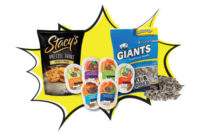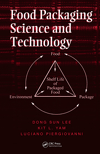Cover Story: The Snack Boom
Snack packaging explodes as snacking bursts into new opportunities

Source: The Hartman Group’s “Modern Eating: Cultural Roots, Daily Behaviors” report

Source: FONA International, Popcorn: Microwavable & Ready-to-Eat

Source: Nielsen Snack Attack, global snacking survey

Source: Innova Market Insights 2011

Source: Nielsen Snack Attack, global snacking survey

Source: Nielsen Snack Attack, global snacking survey
















Getting three square meals a day has become, well, a bit square. Hectic schedules, commutes, conflicting family schedules, pressing to-do lists and ever-buzzing phones have most consumers too busy to eat, let alone cook. But thanks to the explosion of convenient, snack-able foods, no one has to choose between eating and making a deadline.
In the past 24 hours, 92% of adults in the U.S. have had a snack, according to The Hartman Group’s “Modern Eating: Cultural Roots, Daily Behaviors” report. With percentages like that it’s no surprise that Nielsen’s “Snack Attack” global snacking survey reported that there was $374 billion in annual global snack sales ending in March 2014. And consumers aren’t sticking to the same set of snack foods they’ve eaten for decades. They want new, innovative and different snacks, which is why, according to FONA International, 6,010 new snack products have launched in North American between January 2010 and August 2014.
The boom heard round the world
Snacking has boomed, and the boom is global. With the diversification of products that come in snack packages, consumers have branched out to a wider variety of snacks. Diverse snacks offer variety that caters to cultures worldwide. The Hartman Group’s “Modern Eating” report showed that confectionery snacks sate the sweet tooth of consumers in Europe and the Middle East and Africa while cookies and cakes take the cake with Latin American consumers. The Asia-Pacific region prefers refrigerated snacks such as yogurt, cheese and pudding. North Americans munch most on salty snacks.
The North American preoccupation with salty has no doubt helped popcorn pop its way to the fastest growing snack in the aisle. Of the 6,010 new snack packs released from 2010 to 2014, 422 of those were popcorn according to FONA International, which is a 94% increase during that time period. Ready-to-eat or pre-popped popcorn is making noise in the snack aisle, taking up more and more real estate. In September, Pop Secret launched its line of ready-to-eat popcorn using pop culture to draw consumers in. The brand showcased special edition packages featuring the Teenage Mutant Ninja Turtles. To keep their look fresh, the brand plans to work with new franchises periodically.
Don’t spoil dinner – replace it
Snack foods have traditionally been seen as a treat between meals or something that might spoil one’s dinner. However, more people are using snacks in place of meals. According to The Hartman Group’s report, 45% of survey respondents eat snacks as meal replacements. Over the past few years, snack meal packs like Go Picnic have launched offering a variety of snacks packaged together to form a meal. Snacks, like the P3 Snack Pack are also offering more protein to help consumers get a well-rounded meal from their snacks.
If snacks are going to replace several of a consumer’s meals, they have to offer more than salty, sweet and empty calories. According to Innova Market Insights, almost 60% of snack food launches in 2011 were presented as healthy. Consumers want easy, snackable packages of food, but they want it to be as healthy as it is easy. Sensible Portions launched veggie chips in a familiar snack tube to offer a healthy alternative for health conscience consumers. Garden Lights introduced veggie muffins to the freezer aisle in June. The four packs of individual wrapped muffins microwaves right in the clear plastic wrapper for a quick, warm, healthy snack that can double as a breakfast replacement or an afternoon coffee break supplement.
According to the Hartman Group report, 18% of survey respondents listed fresh fruit as their preferred choice making fruit the most popular of the given snack options. While fresh fruit has not traditionally been part of the snack food market, innovations in packaging have given consumers new occasions to consume fresh fruits and vegetables. Ready Pac introduced Ready Snax last February. These innovative snack packaging pair snackable produce like apples, grapes and carrots with other snack items like pretzels, cheese, dip and crackers. These single serve packages give consumers a healthy and complete snack on the go. They also help keep the snack healthy by offering portion control, which 27% of survey respondents said is “very important.”
One is the snackiest number
Increasingly, snacks are sold in individual portions which not only makes them more portable, but it also eliminates the need for consumers to gauge how much of a large bag of chips is a single serving. These single portions also better serve the small and single-person households. According to the Hartman Group’s report, 47% of food occasions are spent eating alone. Snacks like Tribe Hummus and Pita Chips pack portion control and portability. They also allow anyone enjoying a snack by themselves to consume the entire package without having to reseal, repackage or store leftovers from larger packages.
Despite the quantity of new snack foods on the market, most snack packs aren’t filled with foods new to the market. Innovative packaging has helped brands create new opportunities for consumers to take their favorite products on the go or grab them from the pantry for a quick bite between tasks. Portable packs, smaller containers, shelf-stable options, single serving sizes and innovative pairings are helping consumers snack better while helping brands expand their reach. For larger snack food packages, brands are communicating health benefits, drawing consumers to their brand with familiar characters and offering resealability for easier portion control. Packaging has helped everything from grapes to bacon blast into the snack food market.
SIDEBAR 1:
Q&A: Food & Beverage Packaging asked Ronald de Vlam, CEO & Managing Partner of Webb deVlam to share his expertise on designing better snack food packages.
Food & Beverage Packaging: Snacking is becoming more popular and even replacing meals. Why do you think more consumers are reaching for snack packs?
Ronald de Vlam: For some it’s a health perception, others it’s the convenience of an on-the-go pack that accommodates their busy lifestyles. The mindset is that smaller is better, and there are fewer calories, too. Our culture today is always on and on-the-go, so snacking has become even more commonplace than the traditional meal times.
Today, people really do eat everywhere – in meetings, at their desk, walking down the street, in the car and other travel times, probably to the chagrin of other passengers. Where there used to be a stigma about when and where people snacked, these days anything goes.
FBP: More and more snack foods are coming in single-serve packages. What do you think motivates the move to single servings over a larger package?
de Vlam: Calorie counting is widely adopted today. With the number of fitness apps and wearables that monitor activity level, consumers are responding to the gamification of their health – aiming for that low calorie or calorie-neutral day. In line with this, brands have kept up by going even smaller from snack packages, to single-serve packs that are created by calorie count rather than volume. It’s become more about monitoring intake from snacks than indulgence, so brands are having to find that balance.
FBP: How does package design help draw consumers to a brand?
de Vlam: Brands need to think about designing the experience, not just the packaging. When you view the opportunity holistically, brands have the chance to be the architect of every touch point that influences the consumer’s choice and experience with the product, both at shelf and when an individual gets to open the packaging.
Snack packaging needs to avoid the trap of being bland and assess what makes consumers love the brand in general. These moments are opportunities for brands to stand out among their competitors.
Ronald de Vlam is CEO and managing partner of Webb deVlam, a global strategic brand design agency. Founded in 1992, Webb deVlam has been a partner to many large brands and Fortune 500 companies, helping brands uncover consumer insights that lead to opportunities through to a variety of designed brand experiences, including work with brands like Oscar Meyer, Oreo and Pringles on their own snack package opportunities.
SIDEBAR 2:
6 Steps for Snack Packs to Make an Emotional Connection According to Ronald de Vlam of Webb deVlam
1. Be distinctive and stand-out from what other brands are doing
2. Scream delicious
3. Tell the product story
4. The packaging needs to function well
5. Pricing also plays a part
6. If you make a promise, you better deliver
Looking for a reprint of this article?
From high-res PDFs to custom plaques, order your copy today!




















